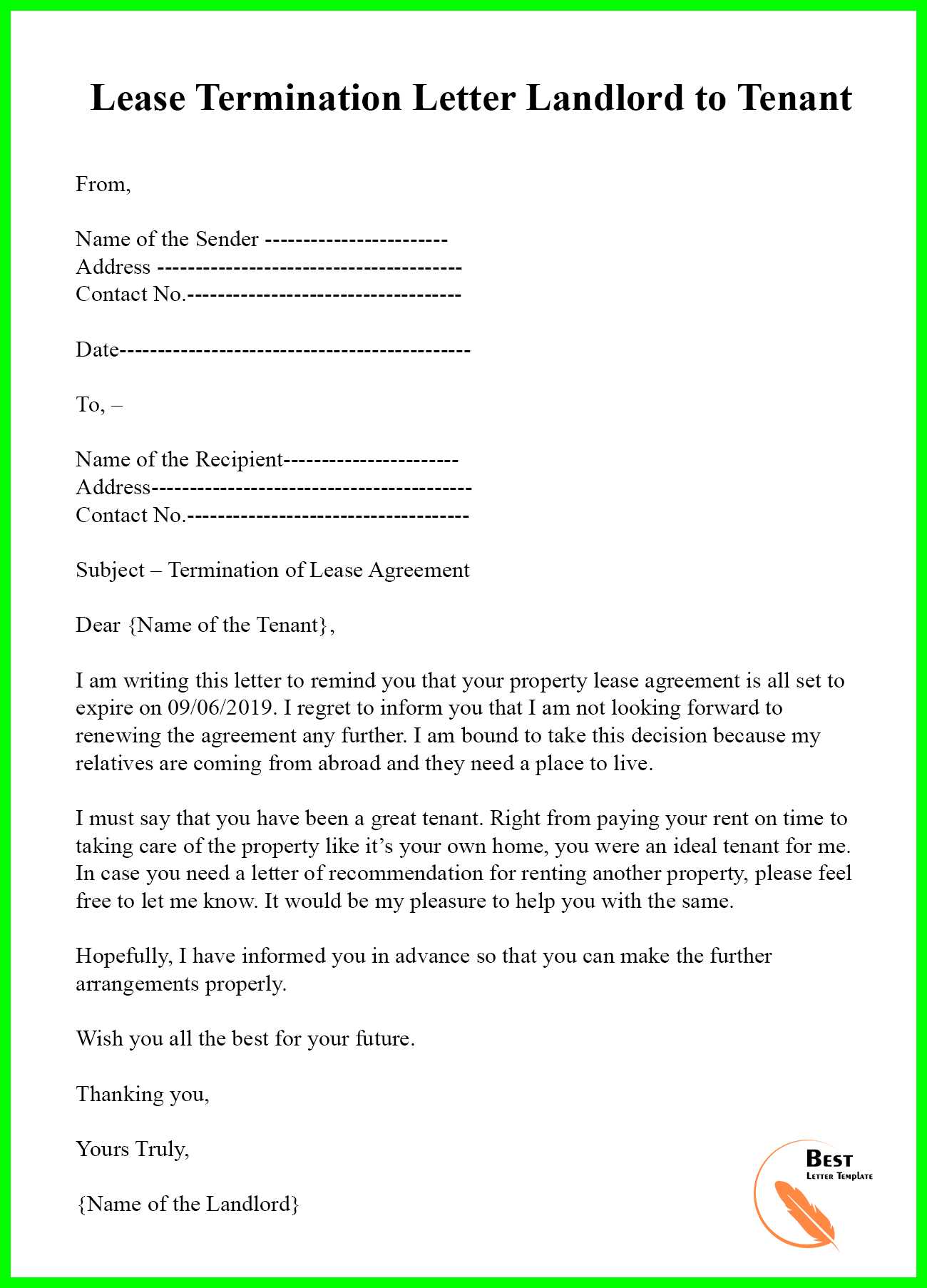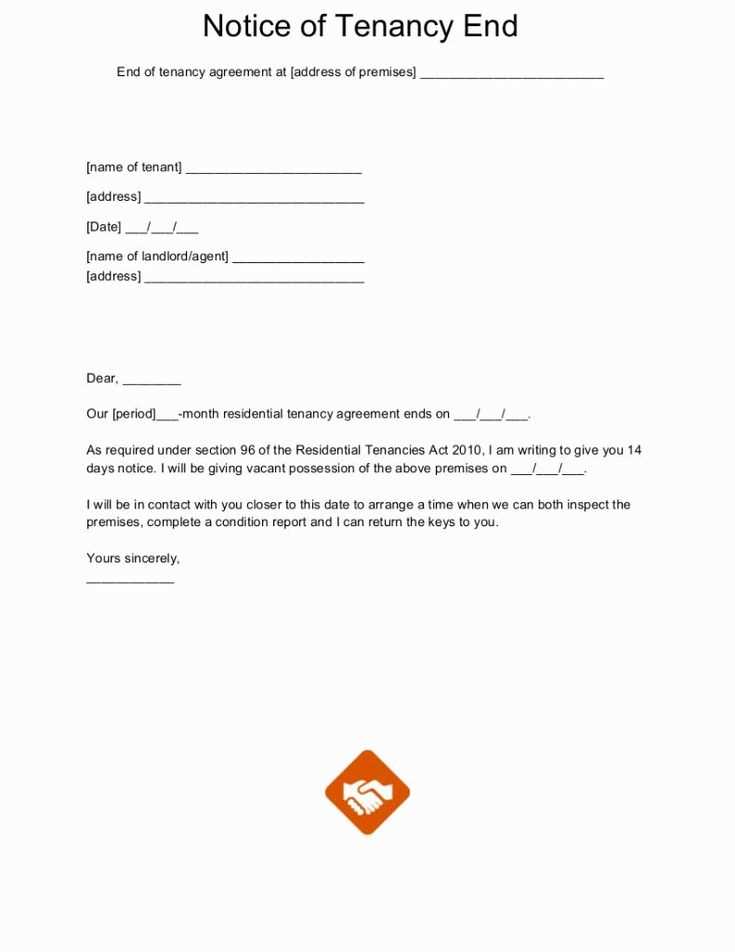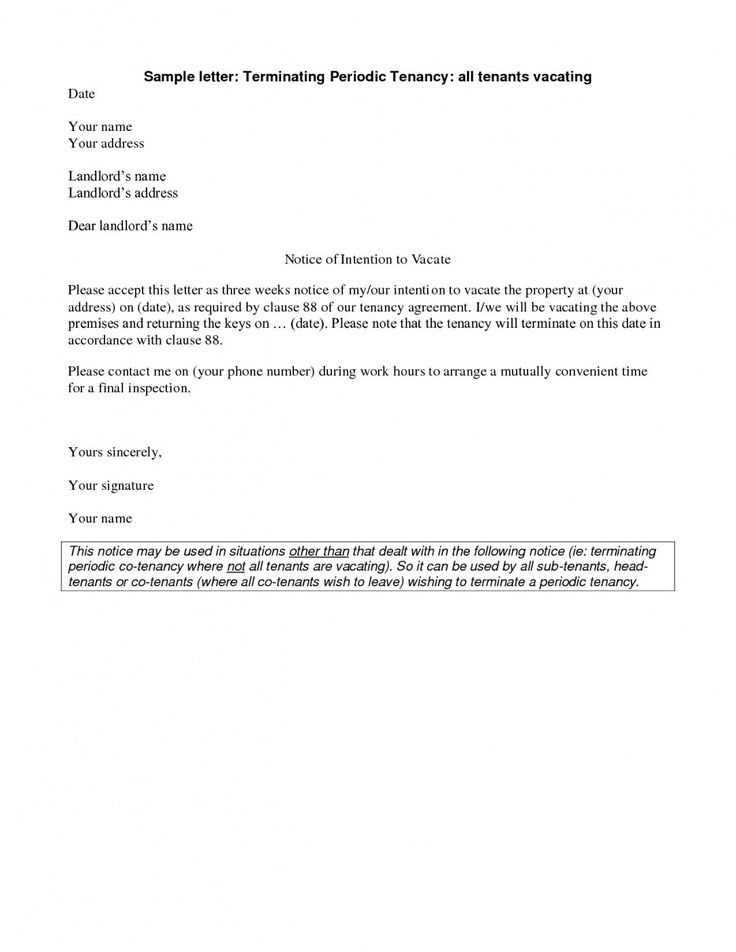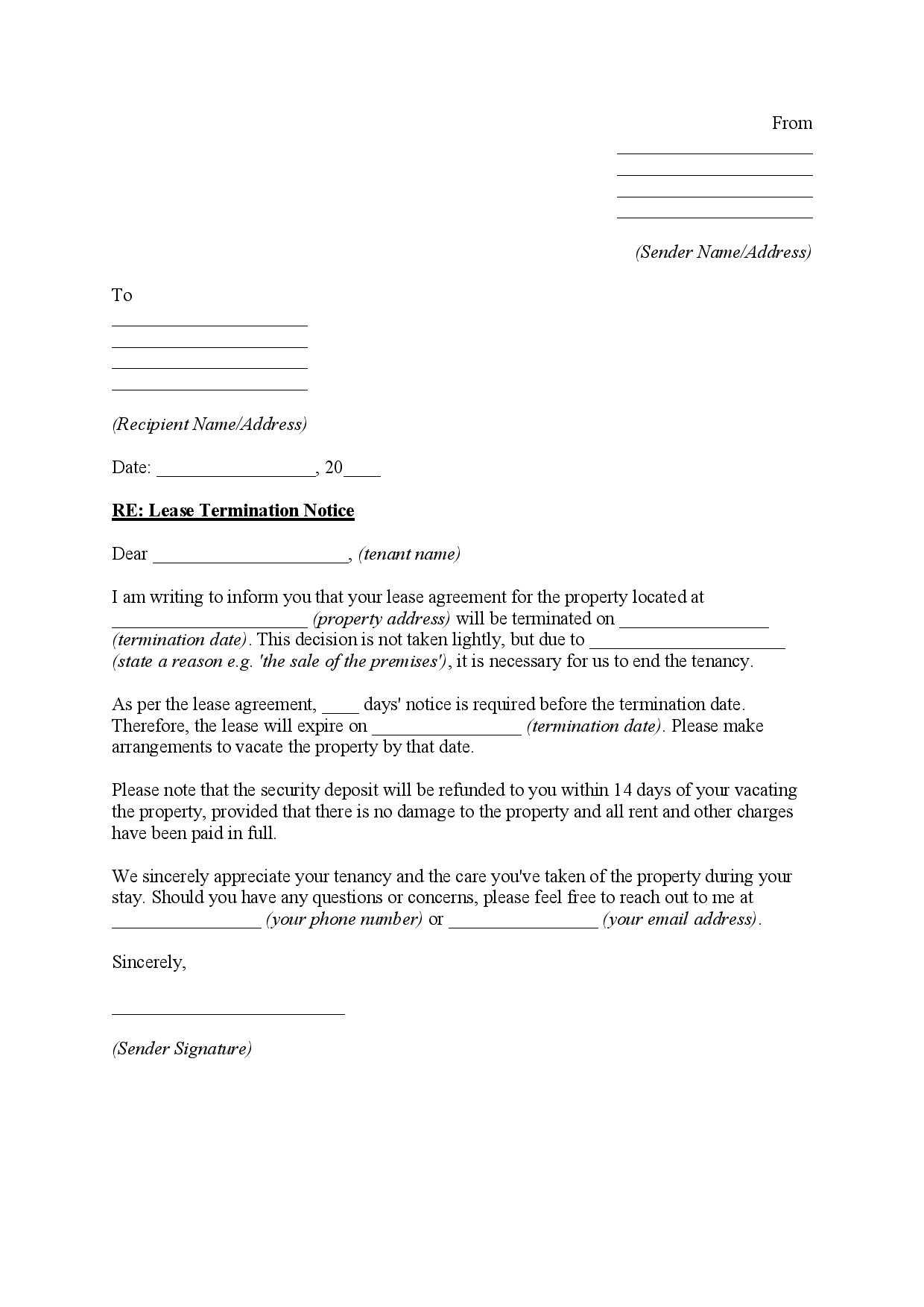Effective Notice of Tenancy Termination Letter Template

Ending a rental agreement can be a delicate process, requiring clear communication between both parties involved. The written communication serves as an official way to inform tenants of the decision and provides important details regarding the end of the lease term. It is essential that the message is precise, respectful, and legally sound to avoid misunderstandings or disputes.
Crafting this document involves including specific information such as the reason for ending the arrangement, important dates, and any necessary instructions for moving out. The document should be structured in a formal manner, following any local laws and regulations. Ensuring that it covers all necessary elements will help protect both the landlord’s and tenant’s rights.
Having a well-structured notification ensures that the process goes smoothly, setting clear expectations for both parties. Whether it is for non-renewal, breach of contract, or other reasons, a properly written communication can help avoid conflicts and ensure that the termination is handled professionally.
Important Information About Lease Termination

When a rental agreement comes to an end, it’s essential to follow a clear process to ensure both the landlord and tenant understand their rights and obligations. Proper documentation and clear communication help prevent misunderstandings, making the transition smoother for both parties. There are several key points to consider when ending a rental arrangement.
Legal Requirements and Compliance
Understanding local laws is crucial when ending a lease. Different jurisdictions may have specific requirements regarding how and when the agreement can be concluded. For example, some regions require a certain amount of notice before ending the contract, while others may have specific guidelines for returning security deposits or handling disputes. Always ensure that the process follows the legal framework to avoid potential complications.
Key Elements to Include in the Document
It’s important to clearly state all relevant details, including the final date of the agreement, reasons for ending it, and any additional responsibilities or instructions. For instance, if the tenant is expected to remove personal belongings or perform certain repairs, these details should be outlined. Clear terms help avoid confusion and ensure a smooth handover of the property.
How to Write a Termination Notice
When ending a rental agreement, it’s important to communicate the decision in a formal, clear, and respectful manner. The document should be precise and include all necessary details to avoid any confusion. By following a structured approach, both the landlord and tenant can ensure the process is smooth and legally compliant.
Start by addressing the document correctly. Begin with a formal greeting, followed by the tenant’s full name and address. This ensures that the communication is clearly directed. Then, include the date the document is being sent and specify the effective end date of the agreement. This will help the tenant prepare adequately for the transition.
Next, outline the key terms. This may include reasons for ending the arrangement (if necessary), any expectations regarding the property’s condition, and instructions on returning keys or other belongings. Be specific about deadlines and any actions required from both parties. Clear instructions will prevent misunderstandings.
Finally, always double-check the legal requirements in your region to ensure full compliance. Some jurisdictions may require specific wording or additional elements, such as the return of the security deposit. By adhering to these guidelines, you protect both your interests and those of the tenant.
Required Legal Details in the Letter
When formalizing the end of a rental arrangement, certain legal elements must be included in the document to ensure that the process is valid and compliant with local laws. These details not only protect the interests of both parties but also help avoid any potential legal disputes. Below are the critical legal aspects that must be addressed.
Key Legal Elements

| Legal Detail | Description |
|---|---|
| Effective End Date | Clearly state the date when the agreement will officially end, allowing both parties enough time to prepare. |
| Reason for Ending | Include a brief reason if applicable, particularly if required by law or the lease agreement. |
| Notice Period | Ensure that the required notice period is given according to local regulations or the original agreement. |
| Security Deposit | Specify the conditions for returning the security deposit, if applicable, and any deductions. |
Compliance with Local Laws
It’s important to verify local regulations to ensure that all required details are included. In some areas, landlords may need to provide additional documents, such as an inspection checklist or specific statements regarding tenant rights. Consulting with a legal professional can help ensure all legal requirements are met and avoid potential issues.
Timing Considerations for Sending a Notice
Timing plays a crucial role when concluding a rental agreement. Properly managing when to send the communication ensures that both parties have ample time to prepare for the transition. Delaying the communication could lead to misunderstandings, while sending it too early may not meet legal or contractual requirements.
The notice period is often dictated by the terms outlined in the original agreement or local regulations. Some regions require a specific number of days or months’ notice, while others may allow for shorter timeframes. Be sure to adhere to these rules to avoid legal issues.
Sending the communication too close to the end date can create confusion, particularly if the tenant needs time to find a new residence or make necessary arrangements. Conversely, providing excessive time might complicate the process, leading to prolonged uncertainty. Balancing the timing is key to ensuring a smooth transition for everyone involved.
Common Pitfalls in Drafting Termination Letters
When drafting a document to end a rental arrangement, it’s easy to overlook key details or make errors that can lead to confusion or disputes. These mistakes can range from minor oversights to significant legal issues. Avoiding common pitfalls is essential for ensuring the process runs smoothly and in compliance with regulations.
One of the most common issues is failing to specify key dates, such as the effective end date of the agreement. Without this clarity, both parties might face uncertainty about the timeline, leading to potential delays or misunderstandings. It’s important to ensure that all dates are clearly stated to avoid confusion.
Another common mistake is missing legal requirements that vary by region. Some areas have specific clauses that must be included, such as security deposit return procedures or tenant rights regarding repairs. Ignoring these legal elements can render the document invalid and lead to complications.
Additionally, being vague or ambiguous in the content can create room for interpretation. The document should be as clear and specific as possible, outlining all expectations and actions required from both parties. Ambiguities may cause disputes later on, so it’s critical to be precise in your wording.
Examples of Effective Notice Templates

Crafting a clear and well-structured document is essential for both landlords and tenants when ending a rental agreement. The following examples illustrate how to properly convey important details in a formal communication. These examples showcase the necessary components while maintaining clarity and compliance with legal requirements.
In the first example, the message includes a precise effective end date and clearly outlines any obligations of both parties. This ensures that all terms are understood and that no misunderstandings arise about the timeline.
The second example emphasizes a clear reason for ending the agreement, which helps in maintaining transparency and reduces the possibility of disputes. By providing the rationale behind the decision, the document can avoid potential conflicts related to the termination.
Lastly, an effective example highlights the security deposit return procedure, specifying how and when the deposit will be returned or adjusted for damages. This ensures that both parties are aware of the financial arrangements and expectations, helping to avoid future issues.
Final Steps After Sending the Letter
After the formal communication has been sent, there are several important steps to take in order to ensure that both parties adhere to the agreed-upon terms and obligations. These final actions help maintain a smooth process and can prevent any potential complications.
Confirming Receipt
It is essential to confirm that the recipient has received the document. This step ensures that there is no confusion regarding the timing and that both parties are aware of the actions to follow.
- Use a reliable delivery method, such as certified mail, for verification.
- Request an acknowledgment of receipt from the recipient.
- Document the date of receipt to ensure compliance with any deadlines.
Follow-up Actions
Once the communication has been delivered, follow up with any necessary steps to close the arrangement. These actions include confirming the return of keys, finalizing any financial matters, and ensuring that the property is in the condition required by the agreement.
- Schedule a final inspection of the property if necessary.
- Settle any remaining financial issues, such as the return of deposits.
- Ensure that all keys and access devices are returned.